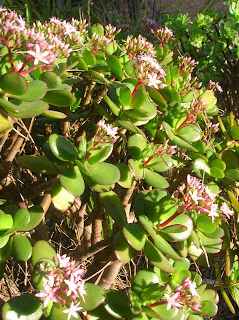PLATYCERIUM SUPERBUM (sin. Platycerium grande)
Origen: Australia
Los helechos "cuernos de alce", llamados así por la forma de sus frondas, son helechos epífitos, es decir crecen sobre los árboles pero sin parasitarlos.
Tienen dos tipos de frondas: unas estériles que forman una especie de cesta que sirve de base al helecho, las otras son las que tienen la característica forma de cuerno de cérvido.
Esta especie es quizás la más grande pudiendo alcanzar 1,8 metros de altura y anchura.
Se suele cultivar en cestas colgantes o directamente sobre una tabla adosada a un árbol. A veces el viento y el propio peso de la planta los hace caer. (Y podemos hacerle fotos más cerca)
Puede soportar heladas muy débiles.
English version:
Origin: Australia
Common name: Staghorn fern
These ferns are called "staghorn" due to the shape of their fronds. They´re epiphytic, that means they live on a tree but they aren´t parasitic.
They have two kinds of fronds: sterile fronds that forms a kind of nest and normal fronds staghorn shaped.
This species is perhaps the biggest one and can reach up to 1,8 metres in height and spread.
They´re usually grown in hanging baskets or directly attached to a tree. Sometimes wind or their own weight makes them fall down. (And we can take some pictures closer)
It can withstand very light frosts.
Actualizado a 07/09/2014

















































